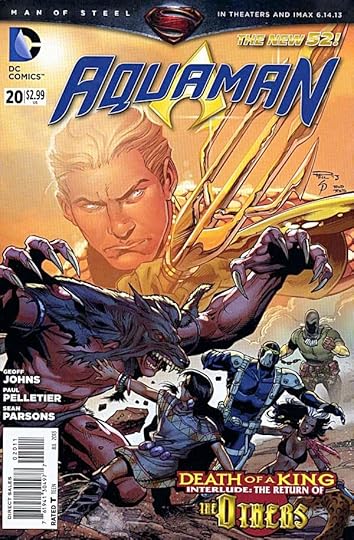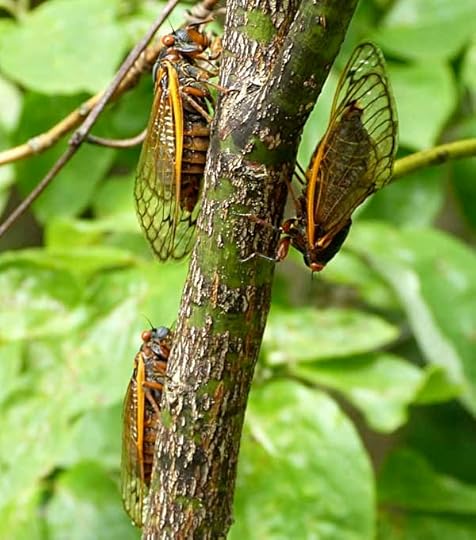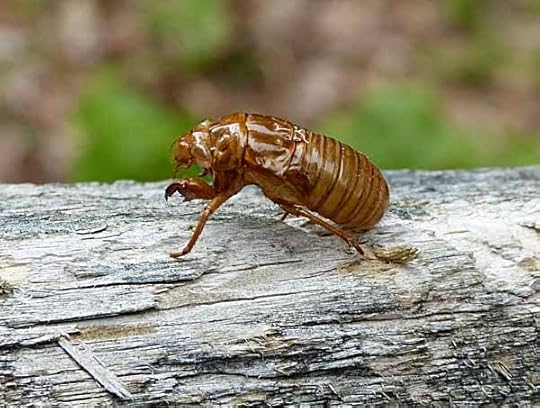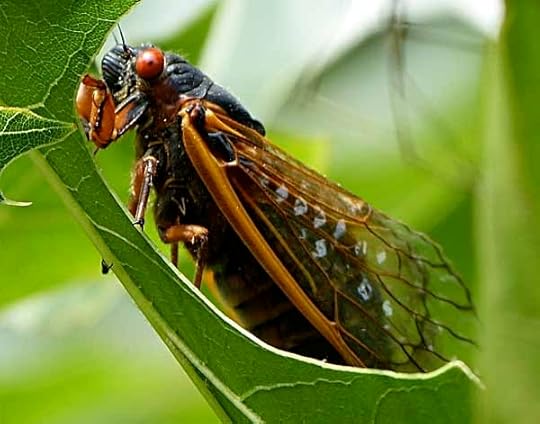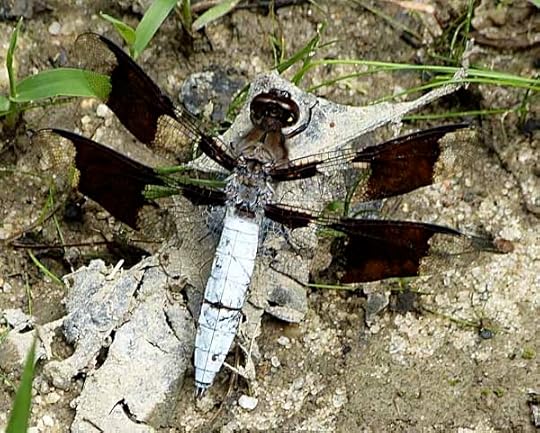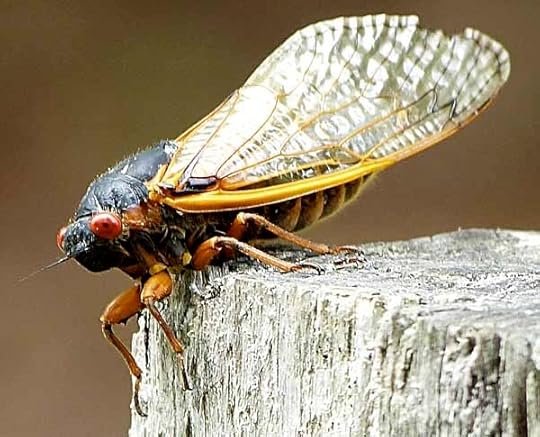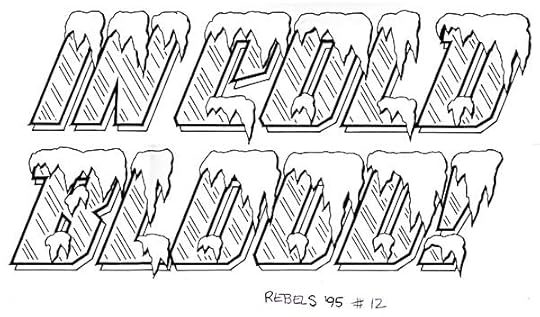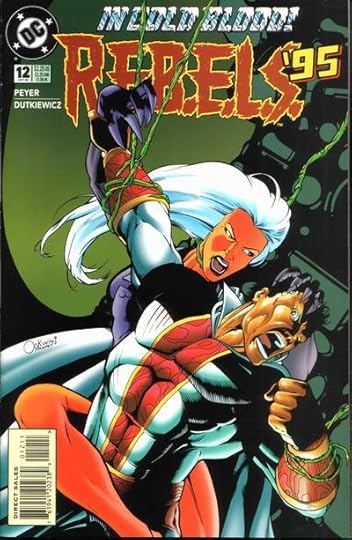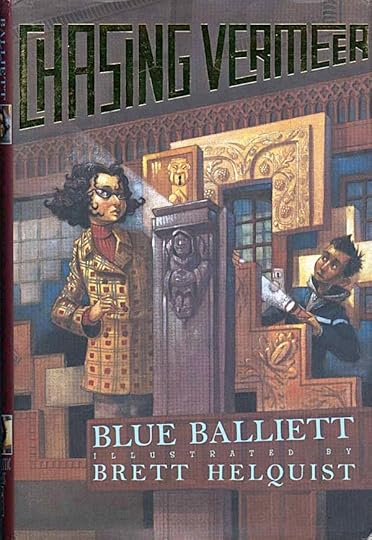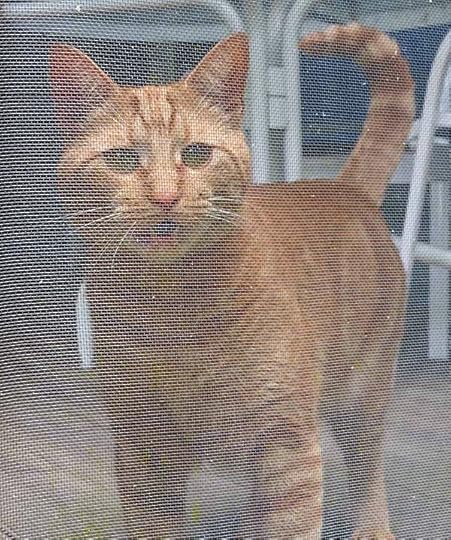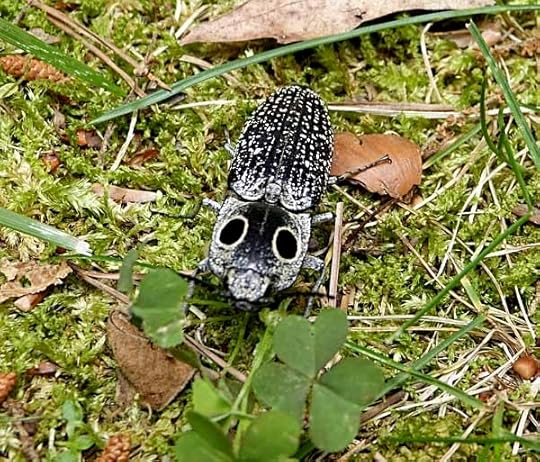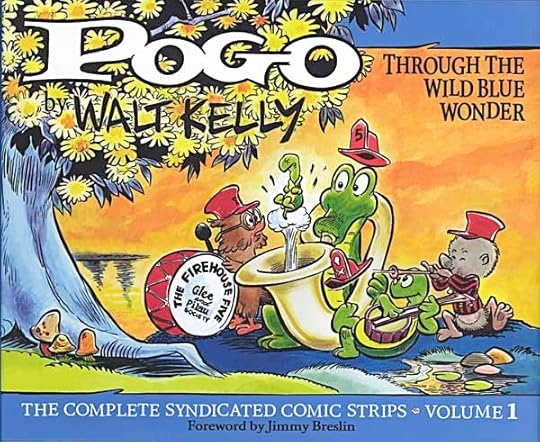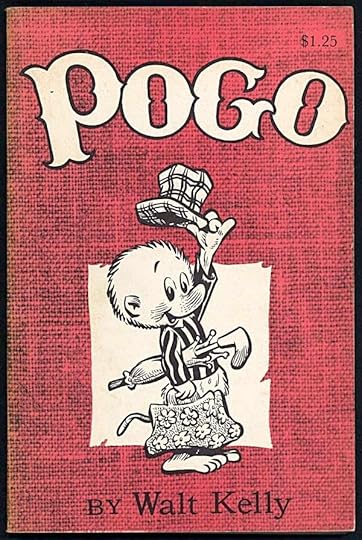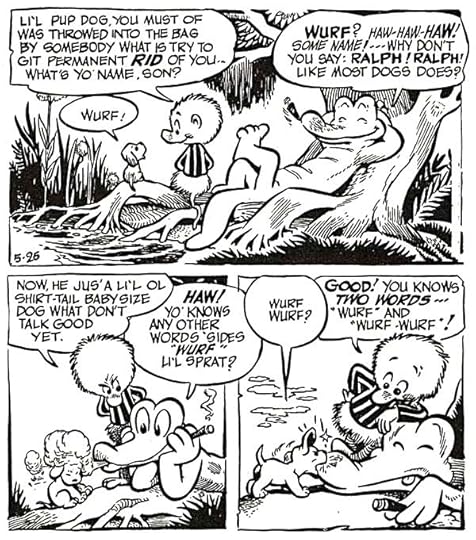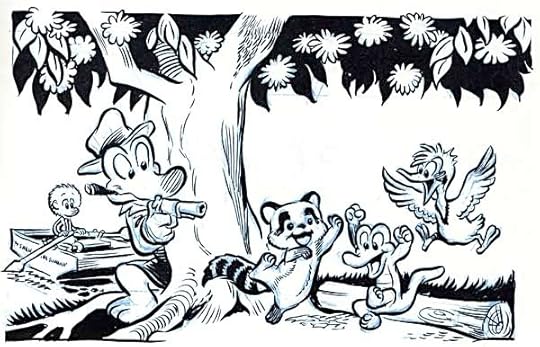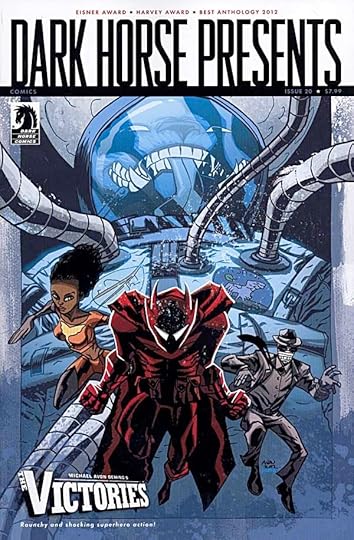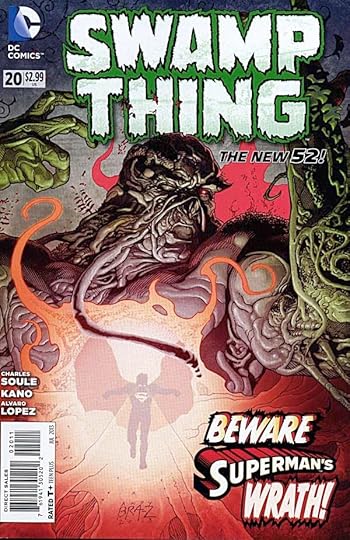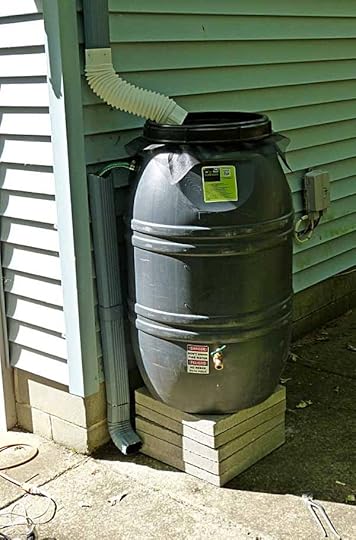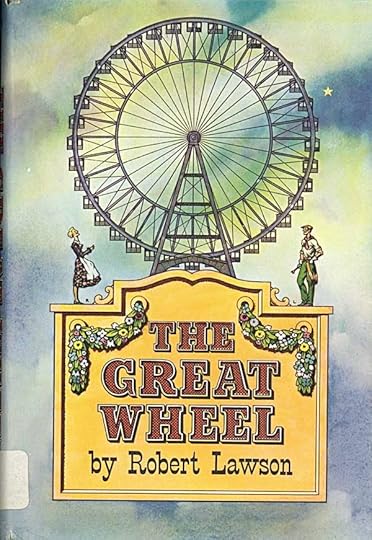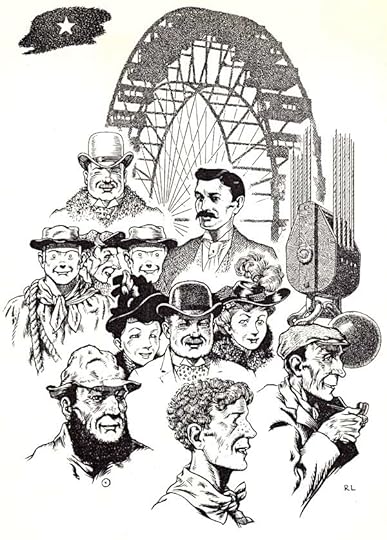Todd Klein's Blog, page 275
June 10, 2013
And Then I Read: AQUAMAN 20
Image © DC Comics, Inc.
The credits on the cover of this issue do not match the actual credits inside, an indication that this might be a fill-in. If so, it’s quite good. The writer is John Ostrander, one I like, and the art is pencilled by Manuel Garcia with a quartet of inkers. Not quite as good as the regular team, but not bad at all. The cover blurb IS correct, this is a story about The Others, that team of misfit heroes we saw in a previous AQUAMAN storyline, and a team that Aquaman was once part of. They’ve been called in by Arthur, now king of Atlantis, to help track down some missing Atlantean weapons in a very dry Native American reservation, not a good place for the Atlanteans themselves to go! It’s not a bad idea, and is made better by the new character, reservation woman Alchesay. She has some shaman powers of her own that are impressive, and joins The Others on their assault against the bad guy with the weapons. I liked the story more than the art, but this is quite a good issue for a fill-in.
Recommended.
June 9, 2013
Cicadas in Belleplain
There was a lot of talk about how we’d be inundated with 17-year Cicadas this spring, but so far we haven’t heard or seen a single one in our neighborhood, so I thought they weren’t here yet. Friday I learned they’re out in Belleplain State Forest, not far from us, so today Ellen and I drove over there. As we reached the road near Lake Nummy Campground I began to hear their high chorus, kind of a constant raspy whine with occasional cooing sounds mixed in (or that might have been distant Cuckoos). We got out to look around and soon found plenty of Cicadas flying and perched.
Here’s the shell or case in which the insect spends much of its life underground. When hatching year arrives, they climb out to any handy perch, like this railing, and the adult Cicada pops out of the case, which splits down the back.
This side view illustrates why they make a perfect “bug-eyed monster,” though they do not bite, and are harmless to humans and animals. It’s all about mating for them.
We saw other interesting insects like this Whitetail Dragonfly, and heard quite a few birds…
…and there was pretty Mountain Laurel blooming, but our focus was on the Cicadas. There won’t be another mass hatching like this here for 17 more years, and it’s cool to hear and see them.
They’re really quite striking and impressive close up. I made a short video as well, which you can watch on Vimeo HERE.
June 8, 2013
Pulled At Random From My Files #9: IN COLD BLOOD
Images © DC Comics, Inc.
One example of hundreds (maybe thousands) of hand-drawn cover lettering I did for DC comics, this one appeared on R.E.B.E.L.S. ’95 issue 12. The cover copy has two words in it which are visual: COLD and BLOOD. In this case I used the COLD part as my visual reference point, since the expression “in cold blood” refers to someone committing an act of violence coldly, without emotion, so using BLOOD as the visual theme didn’t seem right. And the cover editor may have been consulted to confirm this was the better idea.
So, block letters with shine marks to denote ice, and snow caps on all the top edges. Over the top, perhaps, but it is visually interesting, and anything that attracts the eye to a cover is good, as long as it’s not distracting from the art. Notice the snow has a heavier outline on the right side to give it a little thickness. The drop shadow behind the open letters was a standard device to allow a second color, but in this case, it should have been connected or telescoped to make the ice seem thicker. Oh, well.
Here’s the largest image I can find of the cover. The lettering looks good to me, even at this size. Guess I knew what I was doing…! That’s my logo, too, though I never liked it.
June 7, 2013
And Then I Read: CHASING VERMEER by Blue Balliett
Image © Blue Balliett & Brett Helquist.
There have been novels and stories revolving around mysteries and puzzles at least since Edgar Allan Poe and Arthur Conan Doyle. Ones for younger readers in which puzzles take a large role have been around a long time too, from series books like “The Hardy Boys” to standalone gems like “Spiderweb for Two” by Elizabeth Enright and “Sinbad and Me” by Kin Platt. In kids’ mysteries, there usually are more puzzles and less blood and gore, which is fine with me. In 1979, “The Westing Game” by Ellen Raskin won the prestigious Newbery Medal, and since then the puzzle story has become even more popular, I think. “Chasing Vermeer” has that puzzle story idea down. The puzzles are there, and are clever, but the characters are fully developed and believable, making a story that we care about more the puzzles. I liked it.
Petra and Calder are classmates but not friends in Chicago. Strange events keep drawing them together, many of them somehow involving the Dutch painter Vermeer (1632-1675) and collector of odd, mystifying and unexplained facts, Charles Fort. One of the rare and famous paintings by Vermeer, “A Lady Writing,” is being transported to the art museum in Chicago when it’s stolen. Some people that the children know seem to have had advance warning of this through mysterious letters, and after the theft is announced, the thief begins writing letters to newspapers around the world. He is holding the painting hostage until his demands are met.
Petra and Calder know or suspect the missing painting may not be far from where they live, and they begin to search for it. Before long they’re sneaking into buildings, having encounters with threatening strangers, and suspenseful adventures. The fate of the painting is not only important to the art world, it seems to be tied to people they know and care about: Petra’s father, their friend Mrs. Sharpe, and their teacher Ms. Hussey. All three seem to be in a lot of trouble, and perhaps only finding that missing painting will get them out of it.
Well done, and recommended.
June 6, 2013
Leo and the Beetle
A few minutes ago, our cat Leo was hanging on this screen on our porch meowing, letting me know he had found something unusual. I went over and saw there was a large beetle on the screen, but as I tried to touch it, the beetle made a loud CLICK and dropped to the ground.
It wasn’t moving, playing dead, so I got my camera and a beetle field guide to see if I could find out what it was. Didn’t take too long, as it was featured right on the cover, an Eyed Click-Beetle. The large eye spots are not its real eyes, those are much smaller and right at the front.
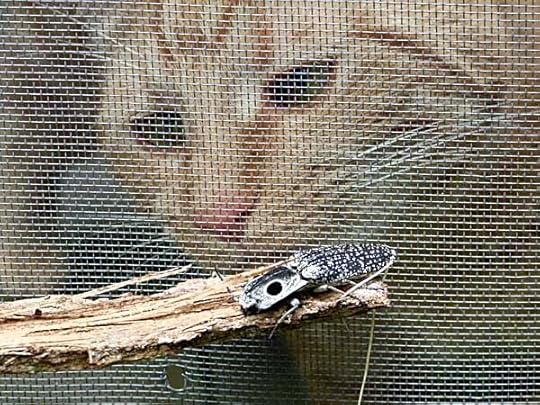 Leo was still meowing, he wanted that beetle in the worst way, so I picked it up on a piece of bark and let him have a good sniff. That’s about all he’d probably do if I actually brought the beetle inside and gave it to him, but I wasn’t about to do that anyway.
Leo was still meowing, he wanted that beetle in the worst way, so I picked it up on a piece of bark and let him have a good sniff. That’s about all he’d probably do if I actually brought the beetle inside and gave it to him, but I wasn’t about to do that anyway.
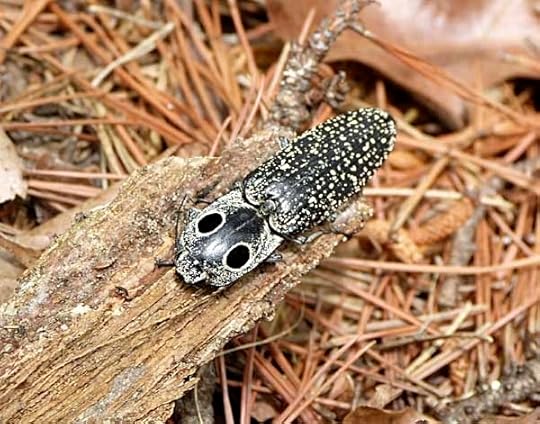 I left the beetle out in the woods after one more photo, and now Leo’s back to following the chipmunks as they run along the edge of the porch looking for seeds and such. This large beetle, about two inches long, is one I don’t remember seeing before, but the book says they’re common throughout North America. Click!
I left the beetle out in the woods after one more photo, and now Leo’s back to following the chipmunks as they run along the edge of the porch looking for seeds and such. This large beetle, about two inches long, is one I don’t remember seeing before, but the book says they’re common throughout North America. Click!
June 5, 2013
And Then I Read: POGO – THROUGH THE WILD BLUE WONDER
Images © Okefenokee Glee & Perloo Inc.
With this first volume of Pogo newspaper strips, Fantagraphics Books is beginning the Pogo collection I’ve long wanted to read. I grew up reading and loving Pogo, but almost never saw the original strips. What I read was the paperback book collections published by Simon and Schuster beginning with this one in 1951:
They’re all great, but I knew from reading about the strip that the books only used some of the material that ran there. Thanks to this super new collection I’m able to read everything. There are even two versions of the earliest storylines, the first from the New York Star, where the strip began, and ran for a few months in 1948-49 before that paper folded, then some of the same material redrawn and reworked when the strip restarted in syndication the following May. Plus there are the Sunday strips in color, reproduced from the printed strips. I never saw most of those, none of them in color. And articles and commentary about Pogo from Jimmy Breslin, Steve Thompson, Mark Evanier and R.C. Harvey.
The reproduction is as good as possible given that Kelly and his family did not have copies of much of the art, and Kelly’s clear animation-trained penwork makes it appealing and inviting to read. If anything, that work is so good that it slows you down, as you study all the great character bits and details. The language is also complex and full of dialect, so that takes some time, too. In fact, this strip is perhaps the opposite of “Peanuts,” which went with a minimalist approach. “Pogo” is maximalist! Both are great fun and often quite funny.
The book is also seasoned with examples of Walt Kelly’s original art, which is easy to spot, as you can see the blue pencil lines beneath the inks, all Kelly needed to create his masterful linework. There’s really not a single thing to fault in this fine book, the paper and production values are excellent, and the wide-screen format gives all 290-plus pages a chance to show off the work at a good size.
How does it compare to the “Pogo” book shown above? First, as I suspected, there’s quite a lot in the strips that did not make it into the book, but on the other hand, a strip requires a fair amount of repetition and restatement to keep readers in the story, and the book cuts out most of that, and adds some new transition panels to help the story flow. As a reading experience, the strip is rather tiring, and I was only able to read a dozen pages (three dailies per page) at a time before becoming overwhelmed by the amount of information there. The book flows better, and is divided into sensible chapters, making for easier reading. So I won’t be getting rid of the books, I’ll keep and enjoy both versions.
Pogo is one of the best comic strips ever produced, and this series is a glorious showcase for it. Very highly recommended.
June 4, 2013
And Then I Read: DARK HORSE PRESENTS 20
Image © Michael Avon Oeming and Dark Horse Comics.
The cover feature this time begins a new serial by Michael Avon Oeming, subtitled as “raunchy” and “shocking.” Those adjectives refer to ideas described in the dialogue, not the pictures, which are typical superheroics in an animated style. For subject matter, Oeming brings in the story of Nazi scientists as satan worshippers and holocaust exploiters, as well as US space program employees later, and the one about Jack Parsons, JPL founder, also a satan-worshipper, all this in the mouth of a terrorist about to blow things up. Kind of over the top for this type of story, I thought.
“Alabaster” by Caitlin Kiernan and Steve Lieber continues to be quite good and clever, and well-drawn. Love it.
“Journeymen” begins a new serial that drops us into a fierce battle between people and monsters without any explanation. Narrative captions by someone we haven’t met yet comment sarcastically. Not a great opening in my opinion.
“Station to Station” is a monster tale that might fit well in the Hellboy universe, though it isn’t in it. Not bad.
“Captain Midnight” continues to develop the story of the WW 2 hero’s sudden return and his determination to continue the mission he was on back then. Well done, though the art in the quiet conversation pages is not as good as in the action scenes. Final chapter in DHP, continues in his own title.
“Resident Alien” is still the best thing in the book for me, as our alien gets back on his feet just in time to begin investigating another murder.
“Finder” continues to intrigue and or baffle me, alternately. This one I liked, some clever ideas about a place full of very ill people trying desperately to pass on their particular illness to anyone they meet.
The other stories didn’t do much for me, but as always it’s a nice variety of things and well worth a read. Recommended.
June 3, 2013
And Then I Read: SWAMP THING 20
Image © DC Comics, Inc.
I was prepared to dislike this storyline pitting Swamp Thing against Superman, but new writer Charles Soule came up with an idea that intrigued me, and carried it through well. Alec has come to Metropolis to confront The Scarecrow about some bad things he’s doing to the plant world. Scarecrow doses him with his fear toxin, which sets Alec on a hallucinogenic trip down memory lane through a series of nightmarish mental visions. Meanwhile, in the physical world, Swamp Thing continues to attack Metropolis, which is where Superman comes in. It’s a good setup because we get into Alec’s mind and personal nightmares while at the same time see Superman trying to deal with the power of the Green in his city. The final confrontation is handled well, too. The art by Kano and Alvaro Lopez is effective and at times scary, something I couldn’t always say about this book in the past. This issue has turned me around and made me want to read more, always a good thing for the creative team (and the publisher).
Recommended.
June 2, 2013
Catching Rain
This weekend’s yard project was putting in a rain barrel. Yesterday we went to a Green Festival in Smithville, and one of the exhibitors was selling them, Green MoJo. They’re made from barrels retired from shipping food around the world. Ellen thought it was a good idea to conserve water for the garden, so we bought one and brought it home. Today I went to Home Depot and bought the concrete patio blocks to stand it on, and a short hose to attach to the overflow at the top. I cut the gutter and attached the provided flexible plastic gutter extender, then routed the outflow hose into the remaining lower part of the gutter. The opening at the top is covered by a screen to keep mosquitoes out, and once we have water in it, we’ll take it out using the faucet at the bottom. It’s not safe to drink, but should be fine for the plants. And if the power should go out for any length of time, we can use it for washing up in the house, too. We’re expecting rain tomorrow, so I’ll soon find out if my installation is a success.
June 1, 2013
Rereading: THE GREAT WHEEL by Robert Lawson
Images © estate of Robert Lawson.
Robert Lawson first came to prominence as an illustrator of children’s books written by others, such as “Ferdinand” about a bull who loved flowers and didn’t want to fight in the bull ring. Before long, Lawson was writing and illustrating his own books for children, a few picture books for young readers, but mostly longer books for middle grade kids. Some of his books are about animals, like “Rabbit Hill” and “The Tough Winter.” Some profile animals and famous figures from history, like “Ben and Me,” the story of a mouse who gave Benjamin Franklin all his best ideas. There are also a few adventure stories, and some historical ones. “The Great Wheel” is the latter, the story of an Irish lad, Conn Kilroy, who emigrates to America in the early 1890s and becomes involved in the building of the first Ferris Wheel at the Chicago Columbian Exhibition of 1893. Along the way we meet Conn’s large Irish family on both sides of the Atlantic, other emigrants like the charming German girl Trudy that Conn falls for, and the brilliant engineer of the wheel, George Washington Gale Ferris whose vision for a giant wheel to entertain visitors to the Exhibition is declared foolish and impossible to build. Ferris proves his critics wrong, with help from Conn and many other hard-working men.
Lawson did most of his art in pen and ink linework, as on this back cover montage featuring the main characters of the book. His pen work is terrific, and his characters are full of almost theatrical exaggeration that makes them memorable.
If you’ve seen modern Ferris Wheels, you will be surprised at the size of the original. Each of the cars is the size of a railroad car and holds about three dozen people comfortably. At the top, passengers are about 250 feet off the ground, gaining wonderful views of the fair and the city of Chicago, and much of the lands around. The wheel’s axle alone was 45 feet long and several feet wide. Quite an engineering marvel, and one that was not surpassed until modern times, with wheels like the London Eye.
The story is old-fashioned and charming, an uplifting tale of American can-do optimism and hard-working immigrants, as well as a predictable romance for Conn that is nonetheless heartwarming. A fine book, as are all Lawson’s own tomes, and highly recommended.
Todd Klein's Blog
- Todd Klein's profile
- 28 followers


